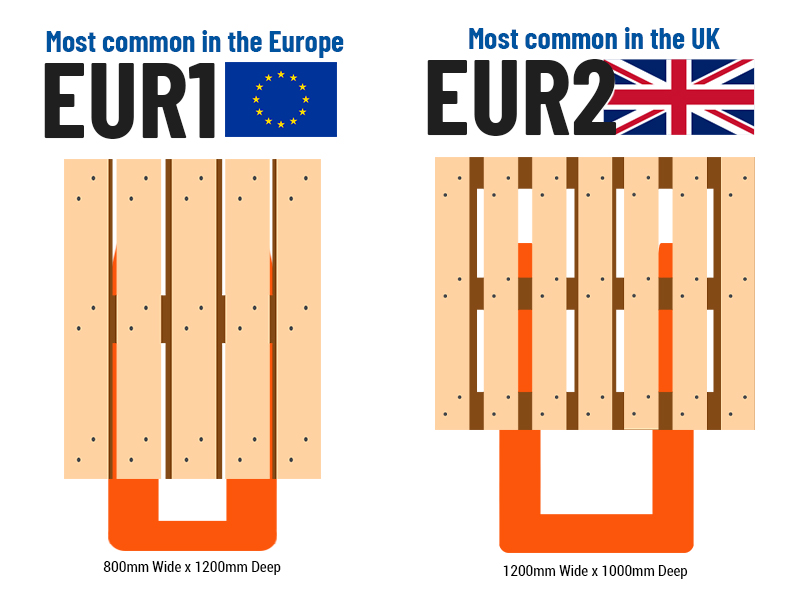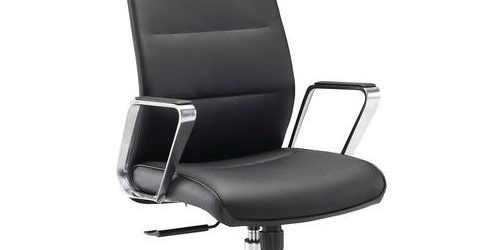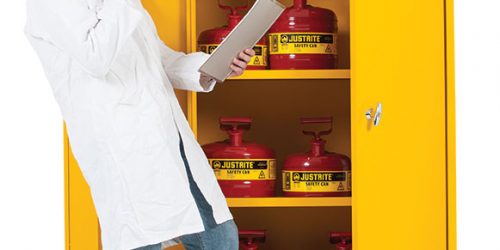Looking at an empty warehouse space it’s easy to imagine how it could be filled with runs of racking. But you’d be wasting a lot of space if the racking doesn’t suit the pallets. Experienced designers of pallet racking systems will work “from the inside, out”. In other words, start with the pallet, not the building space.
The size of the pallet determines the storage cell. This is the space between the upright frames and the horizontal beams.
What are the important characteristics of the pallet?
Firstly, let’s assume that you’re storing good quality pallets that conform with the European specifications. Unlike shelving, pallet racking has no shelf deck, so pallets are simply supported on a pair of horizontal beams. These beams are only 40mm, or 50mm, across the top surface so the pallet itself is doing a lot of work. It must be strong enough to take the load it’s carrying. Some pallets, transit pallets for example, are just not suitable for racking on a pair of beams. There may well be easy solutions, like pallet support bars, timber decking or mesh decking, but you’ll need specialist advice for these options. For conventional good quality pallets, you need to know: the width, the depth, the height, and the weight.
Pallet Width
The width of the pallet determines the cell width, i.e. the length of the horizontal beams.
There are two common pallet sizes in use in the UK. An EUR1 pallet is 800mm wide x 1200mm deep (front-to-back). An EUR2 pallet is 1200mm wide x 1000mm deep. Note that both of those pallets have a 1200mm dimension. The important thing is that the top boards of the pallet should be going into the racking, not running left-to-right, because those boards give the pallet strength when it is supported on the beams.

How long are the beams?
Consider the EUR1 pallet which is 800mm wide. You can’t squeeze it into an 800mm wide space. Forklift operators need some left-to-right clearance to safely load the rack. These operating clearances are regulated by British Standards. For most low height racking the clearance is 75mm each side. So, an 800mm wide pallet needs 950mm beams. But if you build a run comprising 950mm wide bays, you’ll have a lot of frames.
Frames are expensive and take up space so it’s more practical to store two or three pallets on longer beams. For example, if we have three pallets, that’s three lots of 800mm and four clearance spaces of 75mm, which gives us a beam length of 2700mm. This is why 2700mm is the most commonly used beam length in the racking industry. It is possible to have longer beams to take more pallets, but they’d have to be stronger, thicker, and they’d put more load into the upright frames. So 2700mm is usually the most cost-effective option.
If we look at the EUR2 pallet it’s 1200mm wide, so we can use those same 2700mm beams to store two pallets. The clearance will be a little bit more generous, but it means that 2700mm beams suit both pallet sizes.
Pallet Depth
The cell must also suit the pallet depth, and this is determined by the depth of the upright frames. The pallet should overhang the beams by 50mm at the front and the back, so an EUR1 pallet 1200mm deep requires 1100mm deep frames.
An EUR2 pallet 1000mm deep requires 900mm deep frames. So we can see that 2700mm beams suit both pallet types, but the frame depths are different.

Pallet Height
By height we mean the pallet itself and the load stored upon it. Pallet racking is adjustable in that the beams can be positioned in slots in the frame posts on 50mm increments. The height of the pallet determines the pitch of the beams. A lifting clearance is required so we need to add the pallet height, the lift clearance, and the beam thickness to get the vertical pitch. The minimum lift clearance is 50mm but as it harder to see the higher-level cells from a forklift on the ground, the clearance is increased to 100mm for beams above 3m and 125mm for beams above 6m.
Pallet weight
It’s very common to have 2700mm beams that can take 2T per pair. This means you can store three EUR1 pallets of up to 666kg each, or two EUR2 pallets of 1T each. Another common option is 2700mm beams to take 3T per pair.
Heavier loads require stronger beams, putting more load into the frames. And that means stronger frames, possibly with wider posts, which increases the run length.
So, you can’t look at an empty space and immediately think about how many bays of racking you’ll get. It depends upon the cell size and that depends upon the pallet.
Everything starts with the pallet!
Looking for pallet racking?
If you’re looking for pallet racking, Manutan has got you covered. Contact us on 0800 652 6000 to discuss your needs further and our friendly team will be happy to assist.






